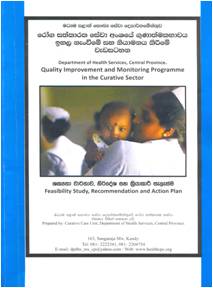The Divisional hospitals provide both outpatient and inpatient care including the provision of basic health facilities for the treatment of minor ailments, referral to secondary and tertiary care institutions for further treatment, provision of perinatal care and follow up of patients referred from secondary or tertiary care institutions. On the other hand Primary Care Units concentrate on outpatient services.
Although these institutions are being developed to provide quality health care for the local population, the general trend is to seek medical care from secondary or tertiary care institutions, driven by the probable misconception that the bigger the hospital the better the care. Similarly, a large number of pregnant mothers prefer to deliver at bigger medical institutions based on the lack of faith they have of the quality of care at primary level.
This has seen to a significant reduction in the bed occupancy rate at primary care institutions as compared to larger hospitals in urban areas of the province, attributing to the hazardously disproportionate utilization of available facilities.In order to curb this unfavourable trend through investigating the cause and resorting to preventive measures, Provincial Health Department undertook a project which looked into issues with regard to the quality of health services provided to the patient in the primary health care system. The project was based on the hypothesis that ‘patient satisfaction’ is an outcome which is not only dependent on a pure clinical experience but also on the nonclinical aspects which instill a sense
of dignity in the latter. Thus more emphasis was given to areas such as planning, management of human, financial & other resources, quality & safety improvements, institutional organization and attitude development of the staff.
The initial stage of the project involved carrying out a situational analysis of 20 randomly chosen Primary Health Care Institutes in the Province. 43 areas from Divisional Hospitals and 27 areas from PMCUs covering a wide variety of aspects were assessed ranging from the general outlook of the hospital, availability of essential equipment at Emergency Treatment Units /Out Patient Departments to maintenance of Hospital Visitors’ comments book.
Further, two audits were conducted separately to assess the satisfaction of the patients who attended the Out Patients Department & those who were treated in wards.Another was conducted to find the reason for patients to bypass the local hospital to attend a ‘bigger’ hospital elsewhere. Through these studies it was concluded that there was a lot of scope to improve patient and staff satisfaction through the improvement of quality of services delivered by the institute and thereby optimize the utilization of available resources.
Hence, a plan was drawn out to formulate a guideline for the improvement of quality of Primary Health Care Institutes and implement it in Provincial Hospitals by mid 2010. Further, it was proposed that the latter should be implemented with an accompanying Monitoring System under the direct supervision of a Medical Officer-Medical Services and the guidance of the respective Regional Director of Health Services. A progress of the programme and encouragement to those hospitals which made achievements was given as a feedback to all the hospitals under the Provincial council via a quarterly magazine named “Suwanetha”.

Quality improvement and monitoring programme.
Kandurata Health Excellency
You can download below mentioned documents
1-5s 2- Css_Opd_and_clinics 3- Discharge check list 4- Etc list divisional hospitals 5- Eti_moh
6- Eti primary medical care units 7- Guide line presentation 8- hhegl divisional hospital 9- hhegl_inward_patients
10- hhegl management units 11- hhegl_moh_offices 12- hhegl_pmcu 13- Introduction_lecture_quality









